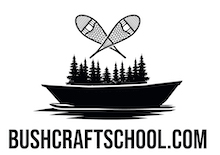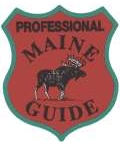The axe is the most versatile and useful tool to have with you in the forest. It can help you build a first-class shelter, put up a sizable pile of firewood, drive tent pegs, split logs, etc., etc., etc. As with all tools, when looking for an axe you should try and get the best one that you can. The best axes made in the world were made in the northeast before the crosscut saw came into wide use. These were hand-forged of two pieces of steel; a harder, well-tempered piece for the bit and a softer piece that was hammered around the eye. The axes were the best because they were used all day, every day in the woods and the men who used them demanded quality. The single-bit axe, or poll axe, was the standard until the double-bit came along and began replacing it. Not too long after, the crosscut saw became widely used, then the chain saw. With the proliferation of the chain saw the axe was no longer used on a daily basis, and as such there was no longer a market for well-made axes. The modern axes made in the USA are usually poured into a mold and tempered one hardness throughout. They’re often too soft to hold a decent edge, or too hard to sharpen with a file. In either case, they’re not good for much except splitting kindling or cutting roots in the ground. There are still good axes available new from Scandinavia, where the axe is still widely used. There are also many great axe heads to be found at antique stores, used tool stores, and flea markets that represent the highest echelon of the axe-maker’s craft. A good test for these is to run a new, sharp file along the edge to sharpen it. If it’s too soft, the file will push the edge over. If it’s too hard, the file will skip. If it’s just right, grab onto the axe with both hands and don’t let go until you pay for it and get it home.
Choosing An Axe
Previous: Wilderness Living Skills
Next: Is This Hard To Read?








Comments on this entry are closed.
Tim,
Great short piece on the rise and fall of the axe… I didn’t know they made good axes anymore until I was gifted a Gransfors Bruks. I’d love to scrounge some old treasures from antique stores and flea markets but there isn’t much in my area. I’m on the wrong end of the continent for that. Most of the equipment carried by the 1880- 1920 era gold rush/ trapping folks was surprisingly low quality and little of it survives today.
BTW- as constructive criticism the black text on the olive green background is really hard on the eyes! LOL.
Thanks for the comment Mike. I’m looking into the olive green background right away. I was unaware of it.
I used a Gransfors American Felling axe all last season for trailwork (trail clearing) to good results. Heard a story about a Snow and Nealy (axes assembled in Maine) bit being bent on the first swing. I own a double bit S&N and have found it hard to shape with a file. Of course maintaining the proper bevels and keeping cheeks maintained on a felling axe helps to keep the edge. Also, I’d watch out for antique single bit axes with excessive pitting or polls that are excessively warped. Nice post.
Axe vs. survival knife. There seems to be some popular debate on these two pieces of equipment. Those in favour of knives they use to baton through wood point out that you are less likely to get hurt with a big knife than you would with an axe. I think there is a role for a large knife in some kinds of wilderness exploration, for instance in case you were going to go light and fast with minimal gear – some large knives can do jobs large and small. They are all tools in the toolbox.
However, I would like to point out, that police will not look at you the same way if you have a small knife and an axe in your pack than if you had a really big knife. Also, you can use an axe safely in the wilderness in the same sense that you can use a really big knife safely. You can stand in such a way that you can chop without hurting yourself. You can split wood without risking a glancing blow hitting your legs. It’s a shame that axes have fallen by the wayside in North America. This is why I chose a small Gransfors axe. Just don’t ask this particular axe to be a splitter of huge hickory stumps, a sledge hammer, or a throwing axe.
Cooperhill, good advice on staying away from overly pitted heads. I’ve got several old Snow and Neally heads and they hold a fantastic edge. The newer ones are of lesser quality – as you say, no longer made in Maine, but tempered and assembled there.
James, the big knife vs. axe debate is popular on the web and among urban people and Youtube celebrities, but for me and the guides and native people I know there is no debate. I’m glad to hear you went with an axe. The reason the axe will never be popular with the instant expert types is that it takes time to learn how to use well.